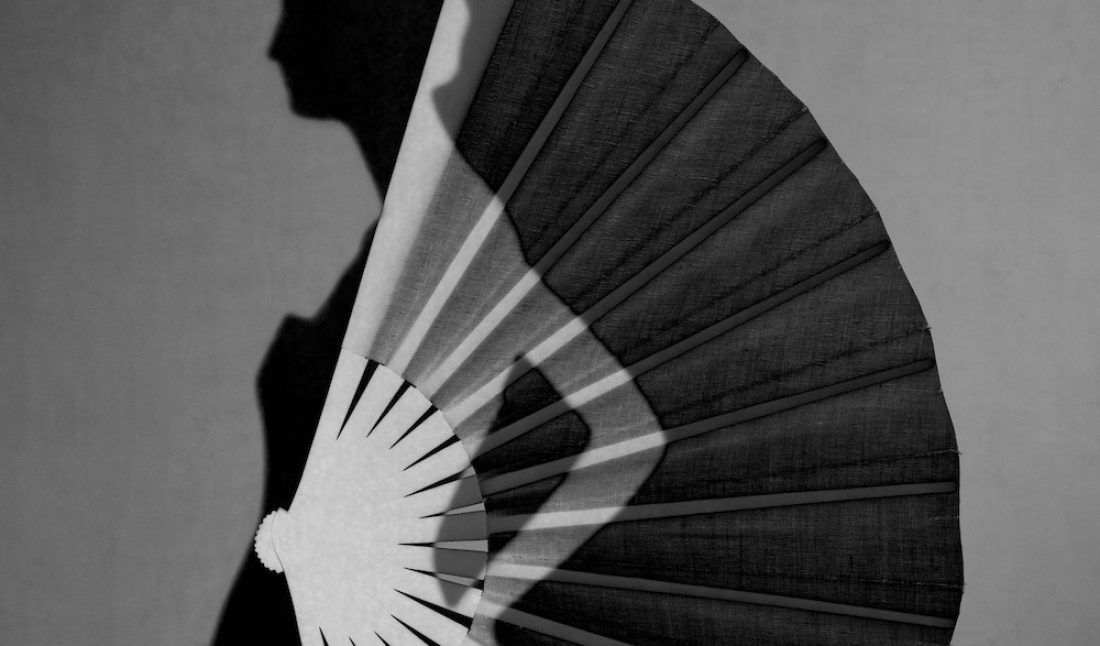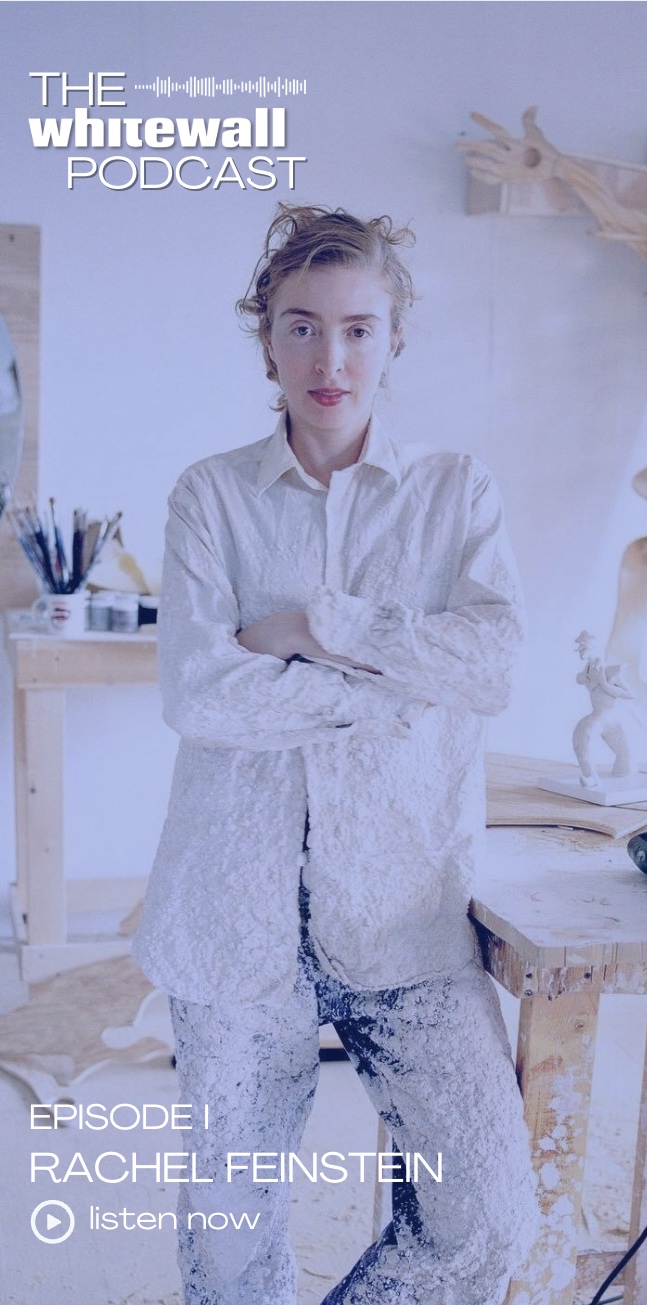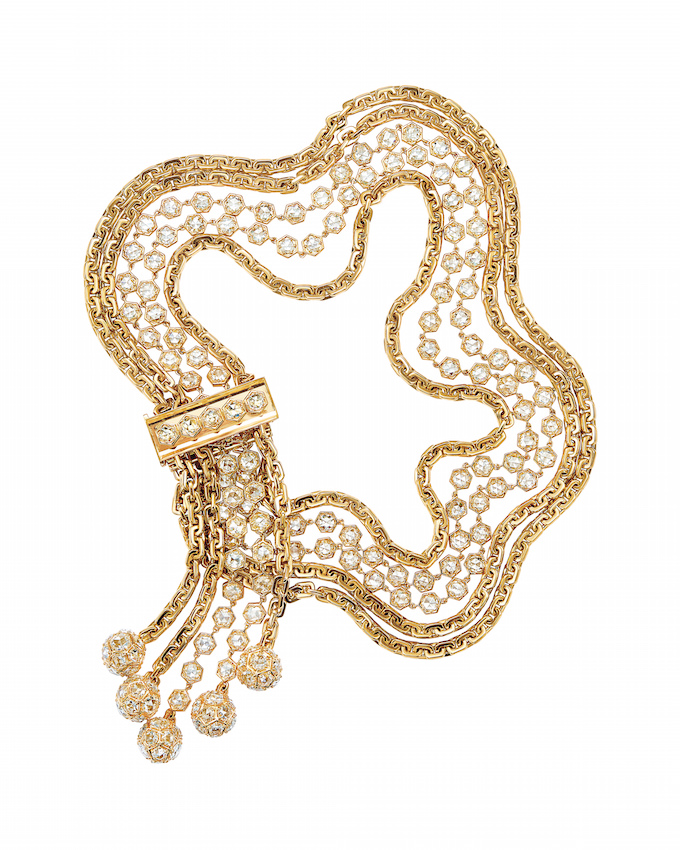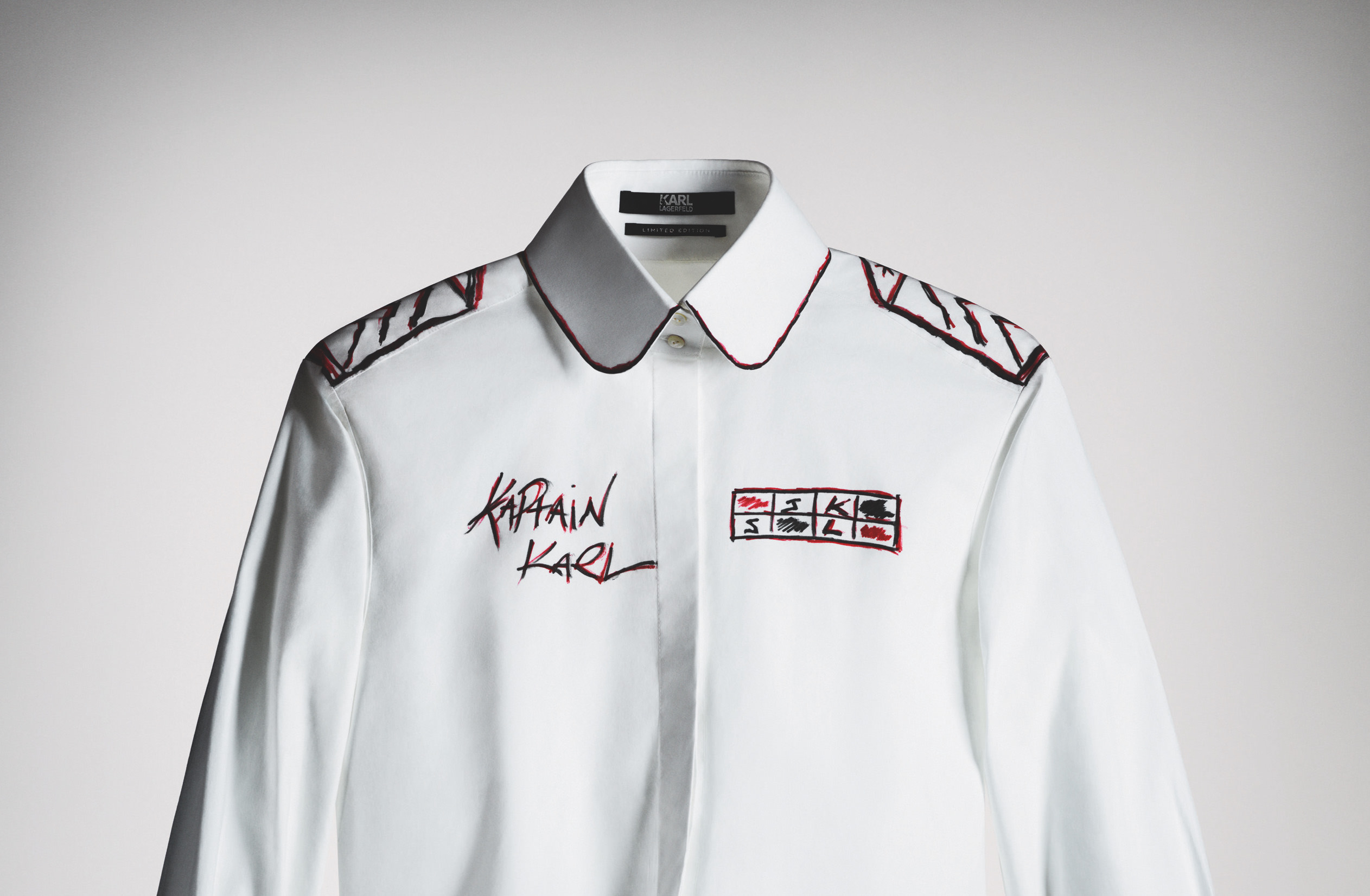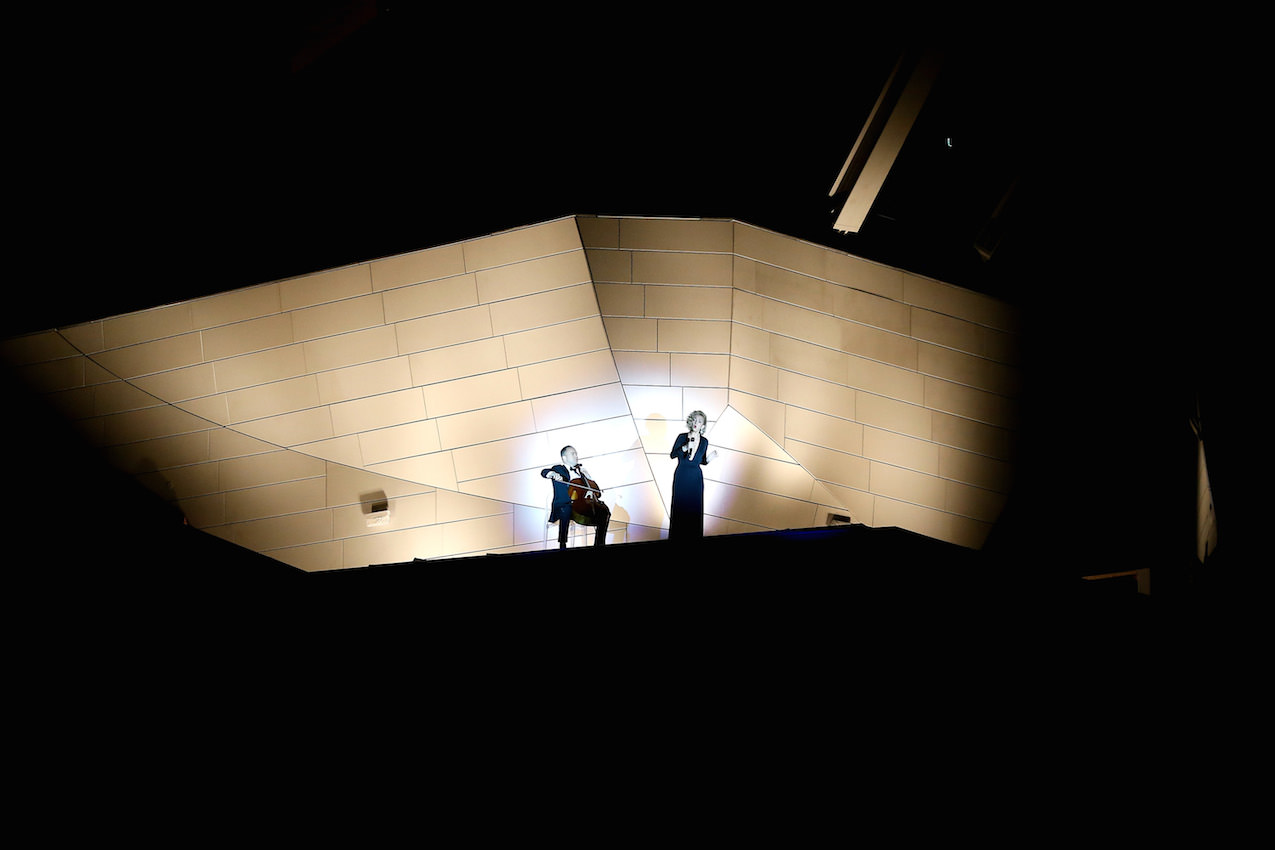The Costume Institute’s annual spring exhibition at The Metropolitan Museum of Art opens to the public May 5 (on view through July 16) with the much-anticipated benefit most commonly referred to as The Met Gala taking place tonight. Chaired by Michaela Coel, Penélope Cruz, Roger Federer, Dua Lipa, and Anna Wintour, the benefit gala will see a star-studded guestlist arriving at The Met in style, dressed in tune with this year’s theme honoring the late designer Karl Lagerfeld in “A Line of Beauty.”
“Karl Lagerfeld was one of the most captivating, prolific, and recognizable forces in fashion and culture, known as much for his extraordinary designs and tireless creative output as for his legendary persona,” said Max Hollein, Marina Kellen French Director of The Met.
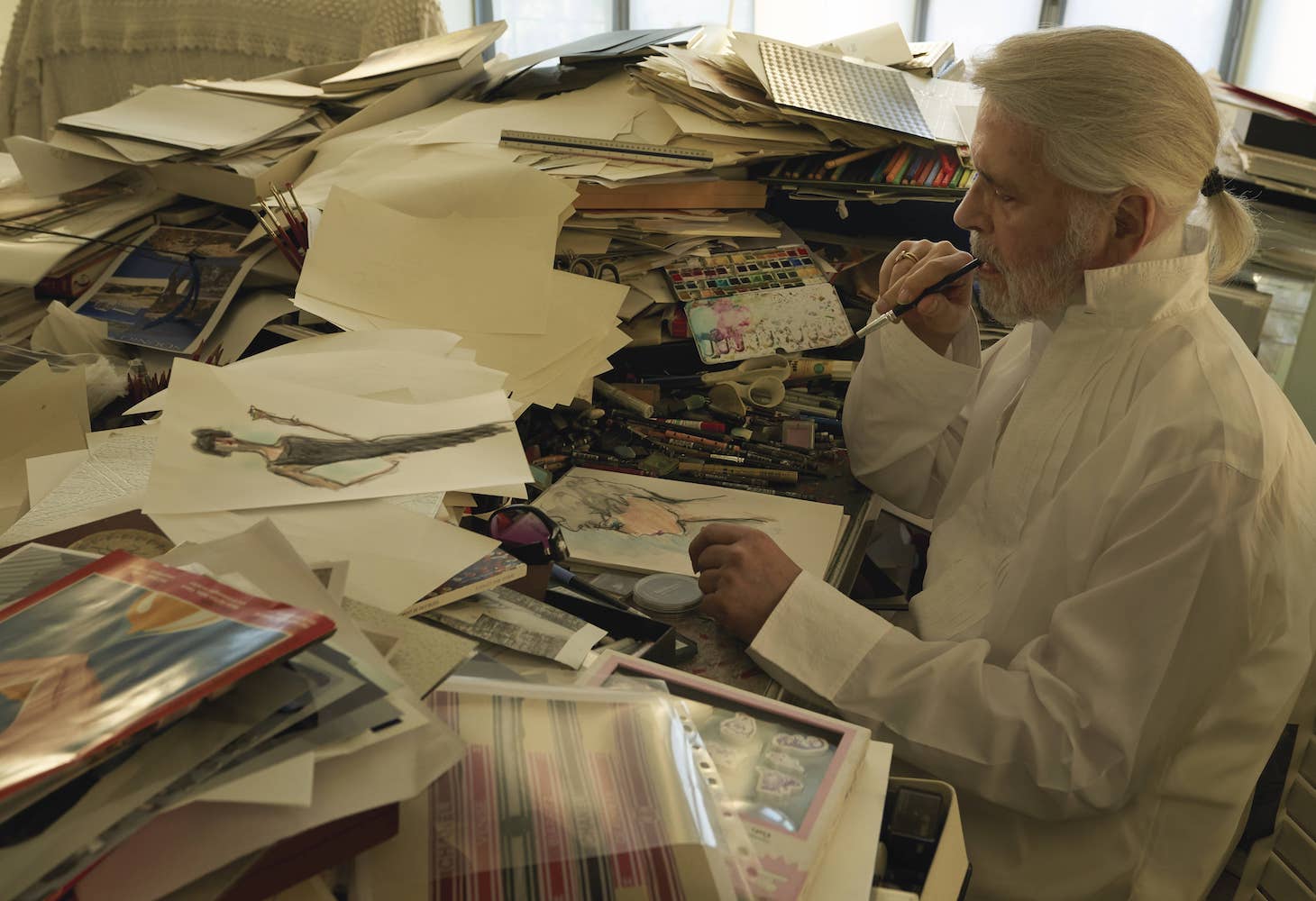 Karl Lagerfeld portrait, photo by Annie Leibovitz / Vogue /Trunk Archive, courtesy of The Metropolitan Museum
of Art.
Karl Lagerfeld portrait, photo by Annie Leibovitz / Vogue /Trunk Archive, courtesy of The Metropolitan Museum
of Art.
Installed within the museum’s Tisch Galleries, the exhibition made possible by Chanel with support from Fendi looks to Lagerfeld’s legendary presence in fashion, spanning the 1950s through 2019. Instead of a typical retrospective, the show has been conceived as a sort of conceptual essay, inspired by the publication The Analysis of Beauty (1753)by William Hogarth, which considers aesthetics and beauty in terms of straight lines—representative of stillness—and serpentine lines—representing liveliness and movement.
With a layout by the architect Tadao Ando, “A Line of Beauty” leads viewers on a journey of Lagerfeld’s work with fashion houses like Balmain, Patou, Chanel, Chloé, Fendi, and his eponymous label. His undeniable influence on contemporary culture is explored through a selection of some of the designer’s most noteworthy garments, archival photographs from his various campaigns, collections, runway shows, sketches, and a series of video interviews with French filmmaker Loïc Prigent. Visitors will find thematic galleries looking at the earlier developmental stage of his work, his singular sketching style, and the duality of his designs framed through Hogarth’s concept of lines.
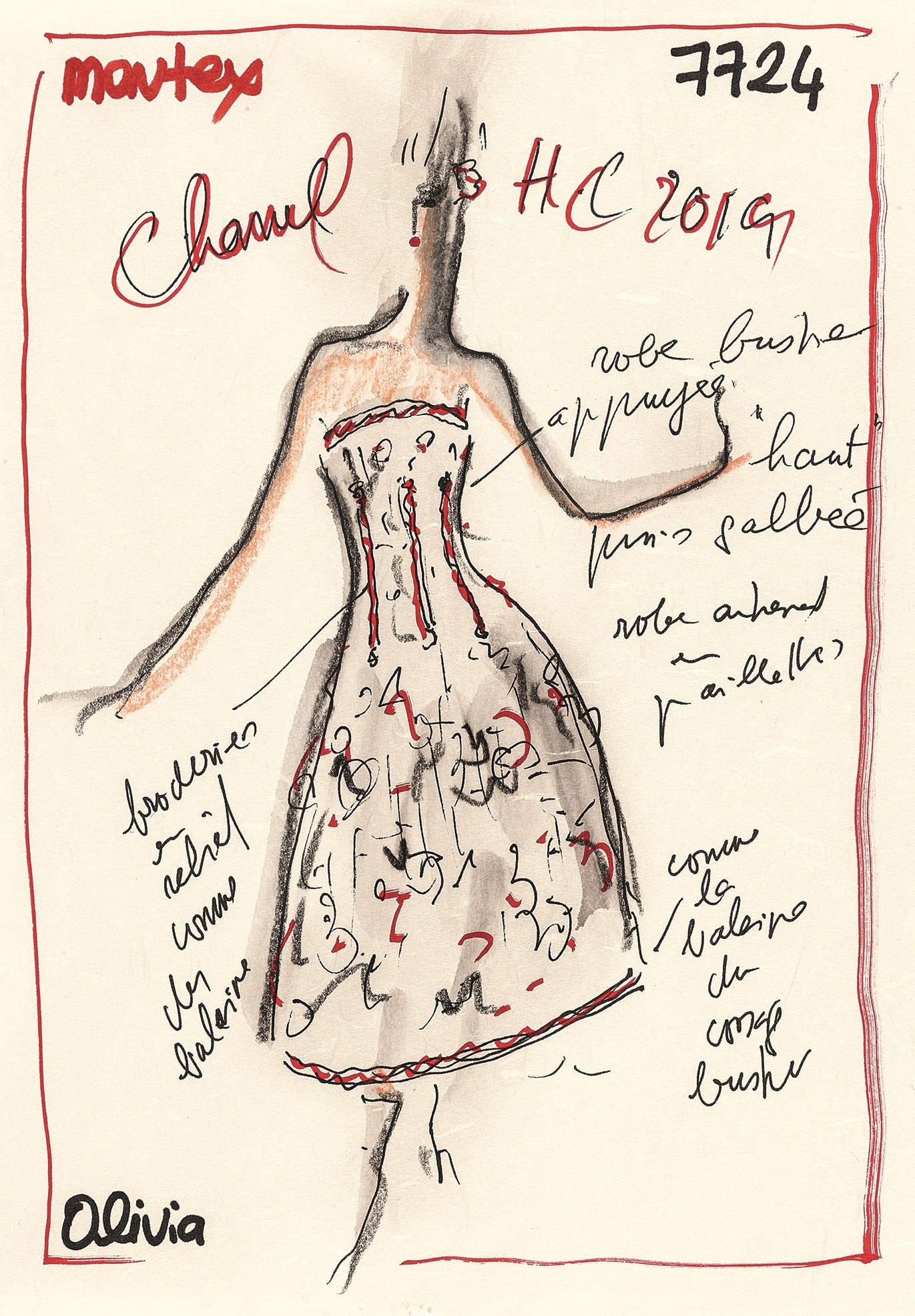 Sketch of CHANEL dress, Spring-Summer
2019 Haute Couture; courtesy of Patrimoine de
CHANEL, Paris, image courtesy of The Metropolitan Museum
of Art.
Sketch of CHANEL dress, Spring-Summer
2019 Haute Couture; courtesy of Patrimoine de
CHANEL, Paris, image courtesy of The Metropolitan Museum
of Art.
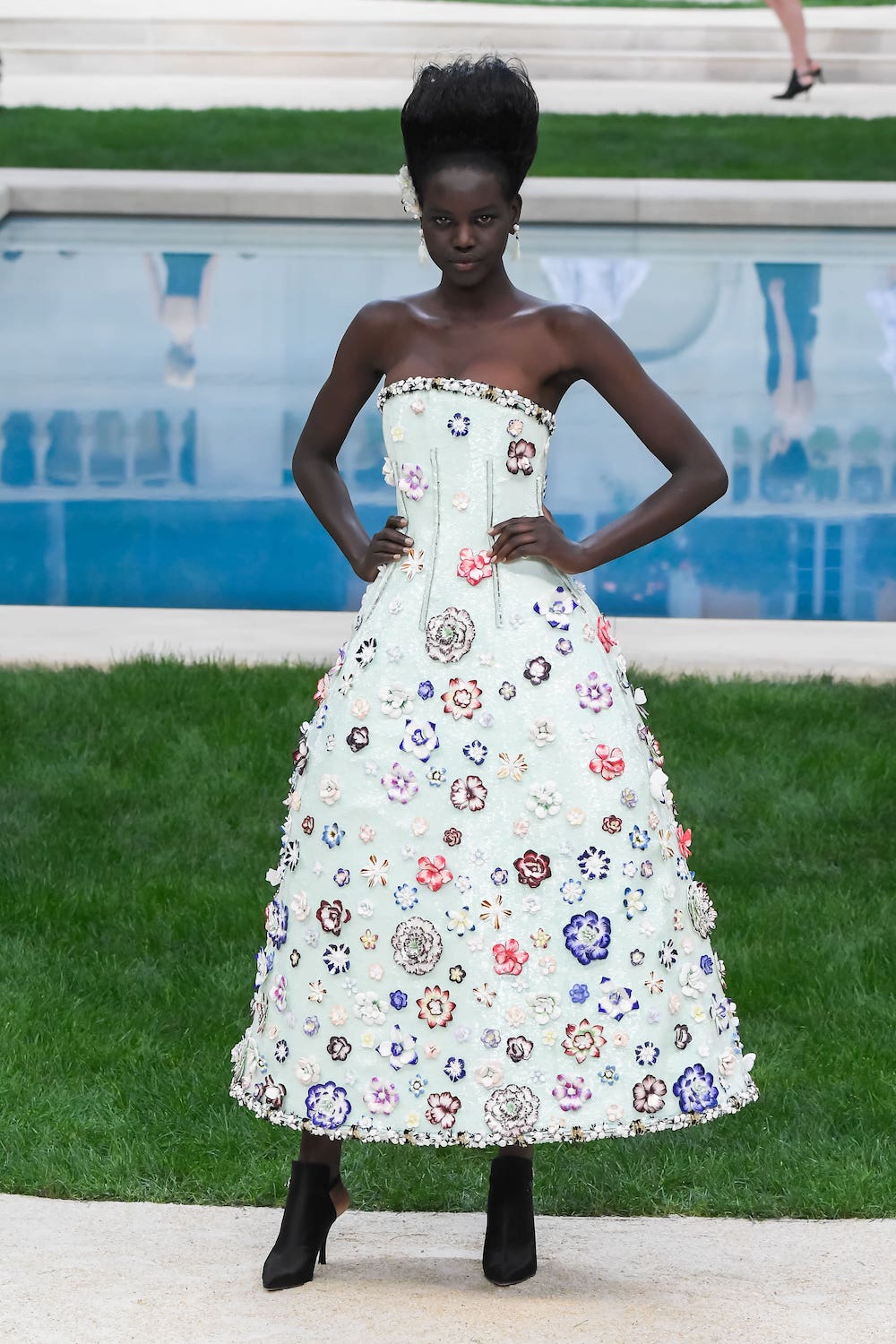 Runway image of CHANEL dress, Spring-
Summer 2019 Haute Couture; photo by Victor Boyko / Getty Images, courtesy of The Metropolitan Museum
of Art.
Runway image of CHANEL dress, Spring-
Summer 2019 Haute Couture; photo by Victor Boyko / Getty Images, courtesy of The Metropolitan Museum
of Art.
“The exhibition will explore Lagerfeld’s complex working methodology, tracing the evolution of his fashions from the two-dimensional to the three-dimensional,” said Andrew Bolton, Wendy Yu Curator in Charge, The Costume Institute. “The fluid lines of his sketches found expression in recurring themes in his fashions, uniting his designs for Chanel, Chloé, Fendi, his eponymous label, Karl Lagerfeld, and Patou, creating a diverse and prolific body of work unparalleled in the history of fashion.”
Viewers are first met by Lagerfeld’s foundation and sketches—his main form of creative communication—and brought to a section dedicated to his ateliers and the seamstresses responsible for translating his designs. The presentation then diverges into conceptual sections grouping Lagerfeld’s designs into straight and serpentine lines that represent his more minimalistic and modernistic tendencies and his juxtaposing love for more decorative, romantic design choices, respectively.
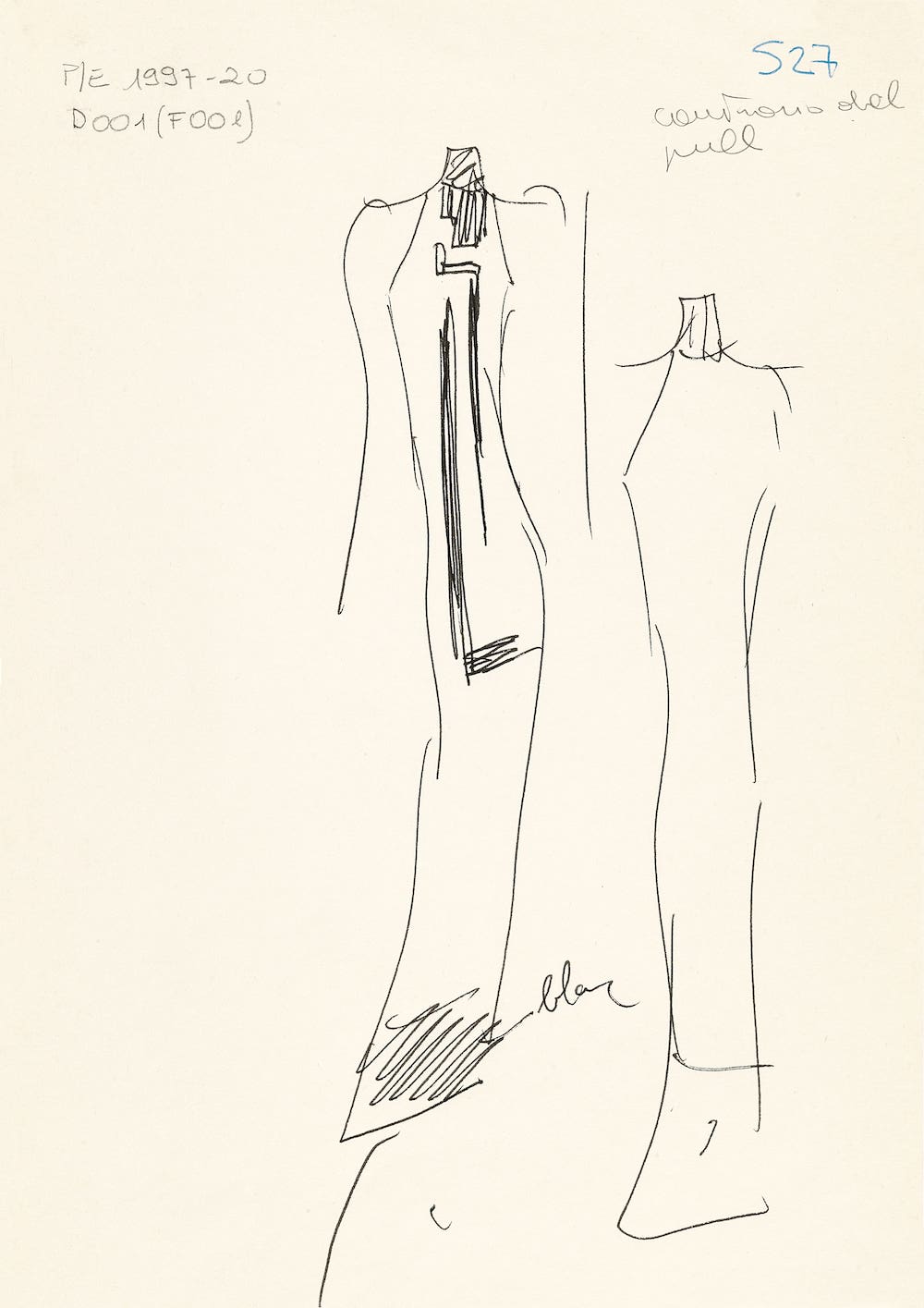 Sketch of FENDI dress, spring/summer 1997;
courtesy of FENDI, image courtesy of The Metropolitan Museum
of Art.
Sketch of FENDI dress, spring/summer 1997;
courtesy of FENDI, image courtesy of The Metropolitan Museum
of Art.
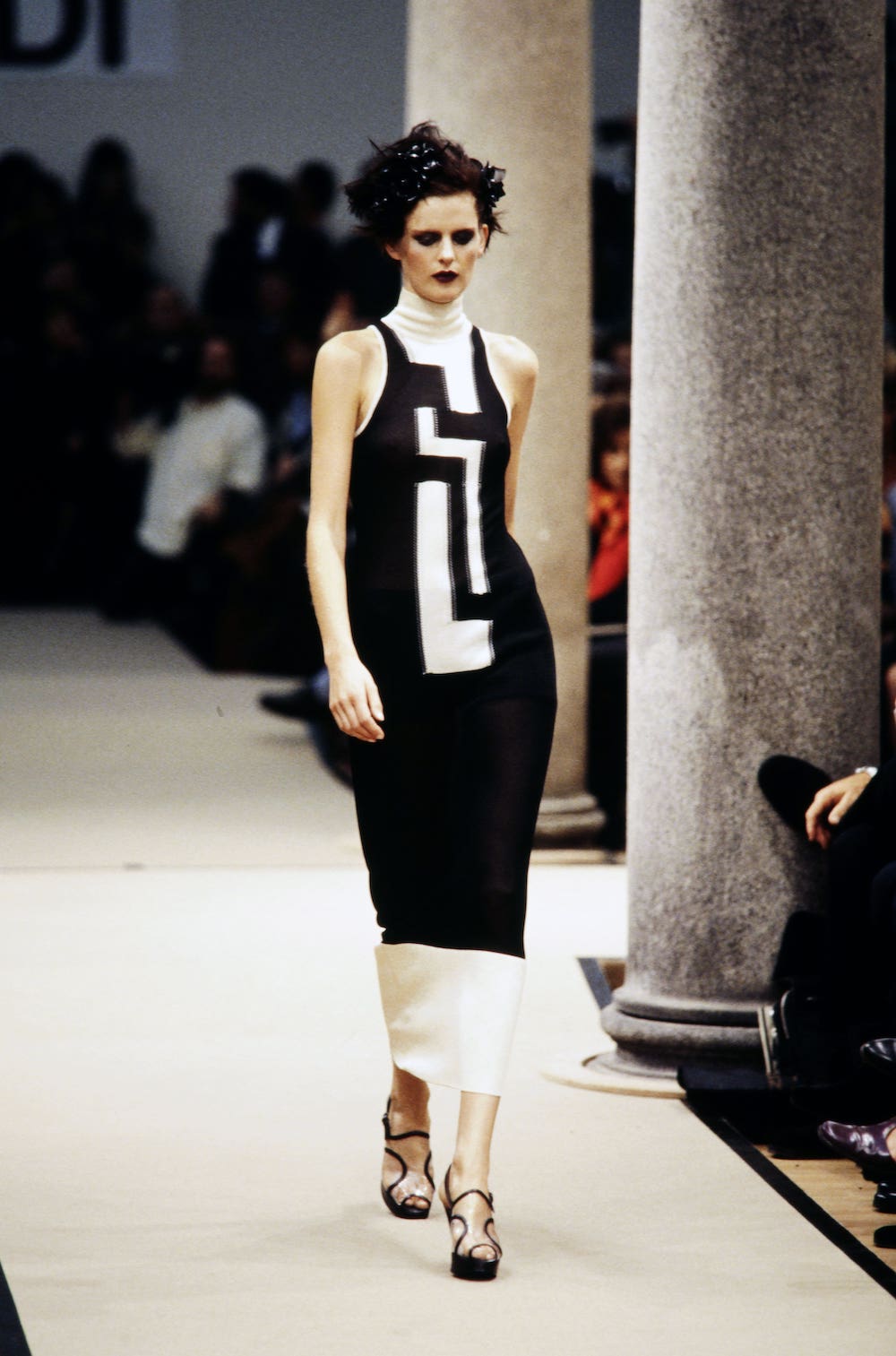 Runway image of FENDI dress, spring/summer
1997; photo by Davide Maestri / WWD / Penske
Media via Getty Images, courtesy of The Metropolitan Museum
of Art.
Runway image of FENDI dress, spring/summer
1997; photo by Davide Maestri / WWD / Penske
Media via Getty Images, courtesy of The Metropolitan Museum
of Art.
Diving further into this concept, spaces dedicated to “sublines” represent the vast contrasts and dichotomies of Lagerfeld’s oeuvre throughout the years, also highlighting the unique moments when these differing qualities converge. The exhibition ends with a display of satire, wherein a pair of displays feature garments that detail Lagerfeld’s use of irony and playfulness, contrasted by a series of ensembles looking to his own personal black and white uniform of choice.
Said Hollein, “This immersive exhibition will unpack his singular artistic practice, inviting the public to experience an essential part of Lagerfeld’s boundless imagination and passion for innovation.”
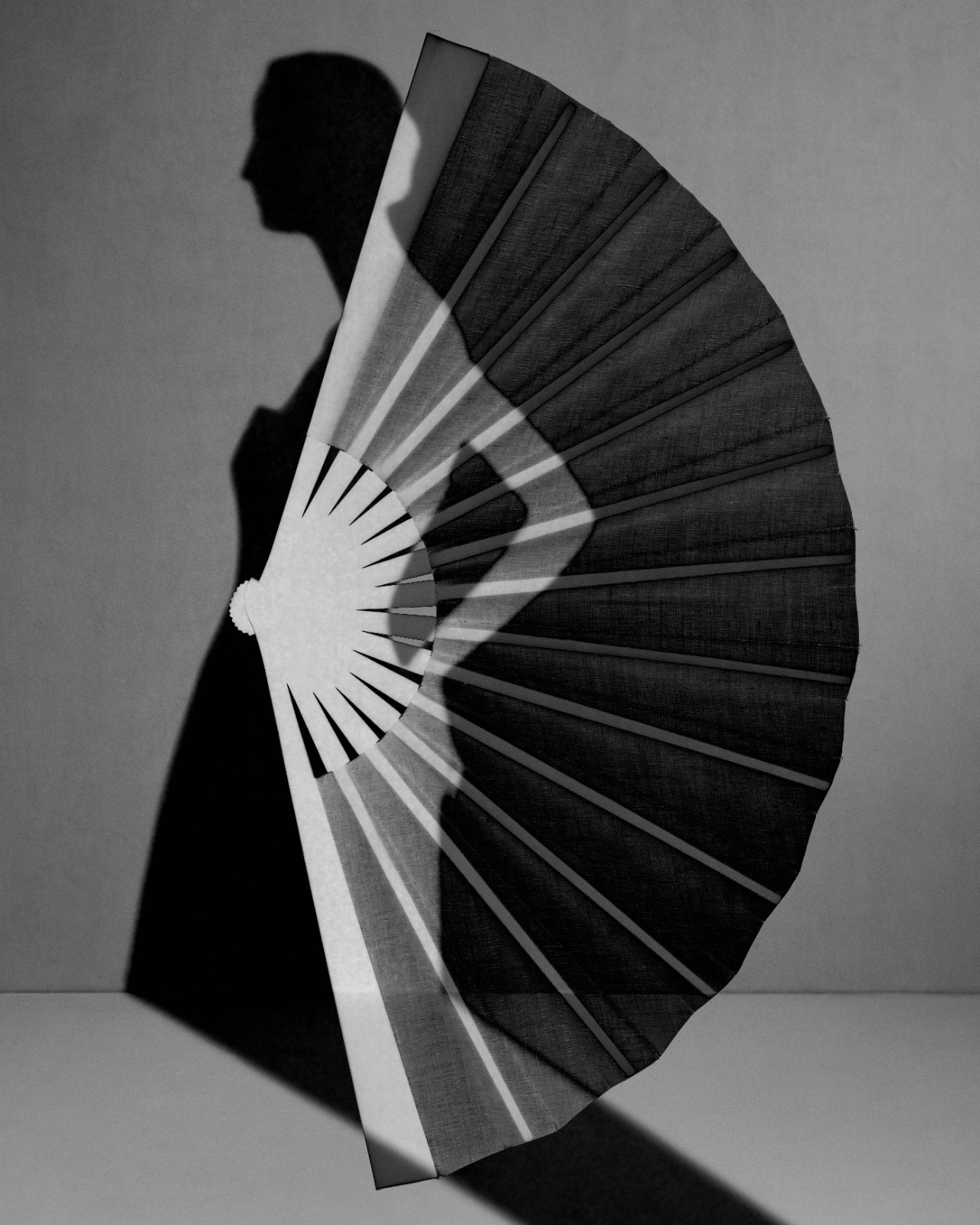 Composite Image, 2023, photo © Julia Hetta. courtesy of The Metropolitan Museum
of Art.
Composite Image, 2023, photo © Julia Hetta. courtesy of The Metropolitan Museum
of Art.
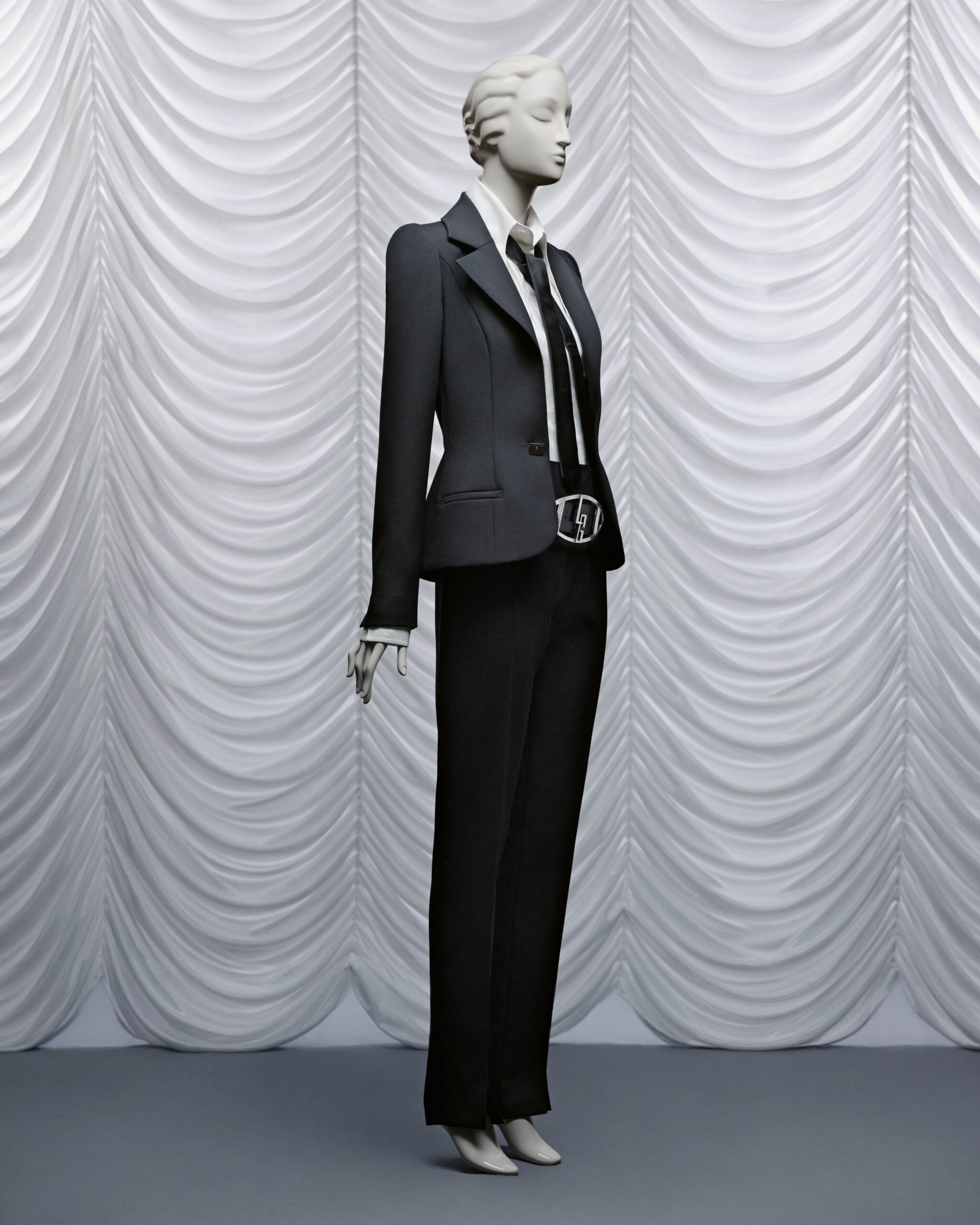 Ensemble, KARL LAGERFELD (French,
founded 1984), fall/winter 2004–5; courtesy of KARL LAGERFELD, photo © Julia Hetta, image courtesy of The Metropolitan Museum
of Art.
Ensemble, KARL LAGERFELD (French,
founded 1984), fall/winter 2004–5; courtesy of KARL LAGERFELD, photo © Julia Hetta, image courtesy of The Metropolitan Museum
of Art.
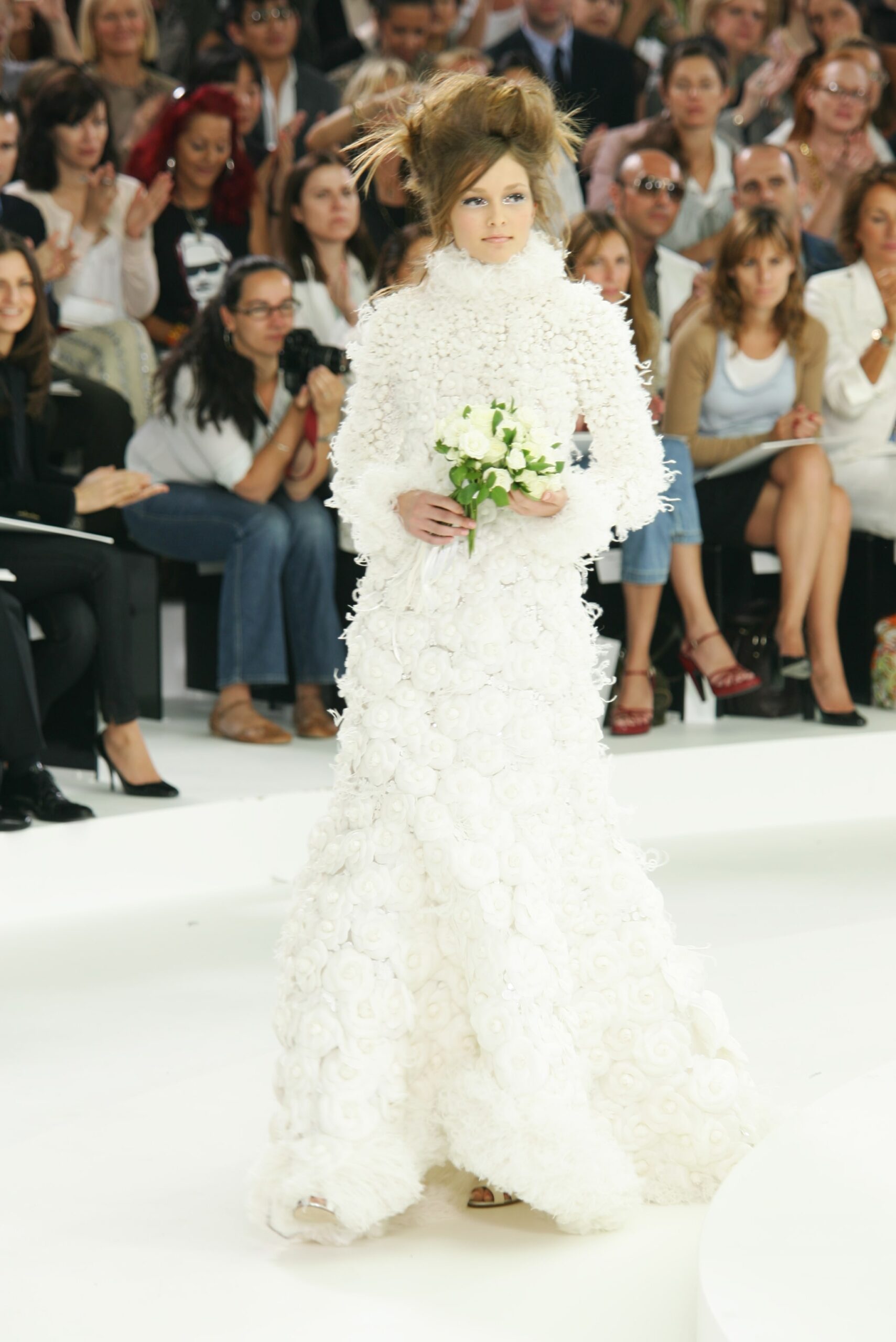 Runway image of CHANEL wedding dress, Fall-Winter 2005/06 Haute Couture; photo by Giovanni Giannoni / WWD / Penske Media via Getty Images, courtesy of The Metropolitan Museum
of Art.
Runway image of CHANEL wedding dress, Fall-Winter 2005/06 Haute Couture; photo by Giovanni Giannoni / WWD / Penske Media via Getty Images, courtesy of The Metropolitan Museum
of Art.







